The Corniche Roads of the French Riviera consist of three routes following the mountainous stretch from Nice to Menton. The Corniche offers dramatic coastal views, which you can discover by car through three scenic routes: the Grande Corniche, the Moyenne Corniche and the Corniche Inférieure.
Watch our short video on the French Riviera, an aerial journey from Toulon to Menton via Saint-Tropez, Cannes, Nice and Monaco ⤵
What is a corniche road?
A ‘route en corniche’ or ‘route en balcon‘ means a cliff road.
A “corniche” or “balcony” road is a road that rises significantly above the sea or a valley. It is generally a more or less informal nickname given to all or part of certain roads, justifying a feat of engineering or tourist interest.
Several tourist routes in France are known as “Routes en corniche” or Corniche Roads:
- La Route en Corniche (route nationale 1) is an embankment road built on the Indian Ocean on the French island of Réunion.
- La Route de la Corniche d’Or (or Corniche de l’Estérel) links Saint-Raphaël to Cannes along the Esterel massif (“routes départementales 98 and 6098”).
- La Corniche du Président-John-Fitzgerald-Kennedy is in Marseille.
- La Corniche Sublime is a section of the route départementale 71 on the left bank of the Verdon, overlooking its canyon in the Var département.
- La Corniche des Cévennes is the tourist name given to route départementale 9 in the Cévennes, in the Lozère département.
- La Corniche Basque is around ten kilometres long and stretches from Ciboure to Hendaye in the Pyrénées Atlantiques département.
- And finally, la Route des Trois Corniches de la Riviera: Basse, Moyenne and Grande. A series of parallel roads linking Nice to Menton at different altitudes above the Mediterranean Sea in the Maritime Alps.
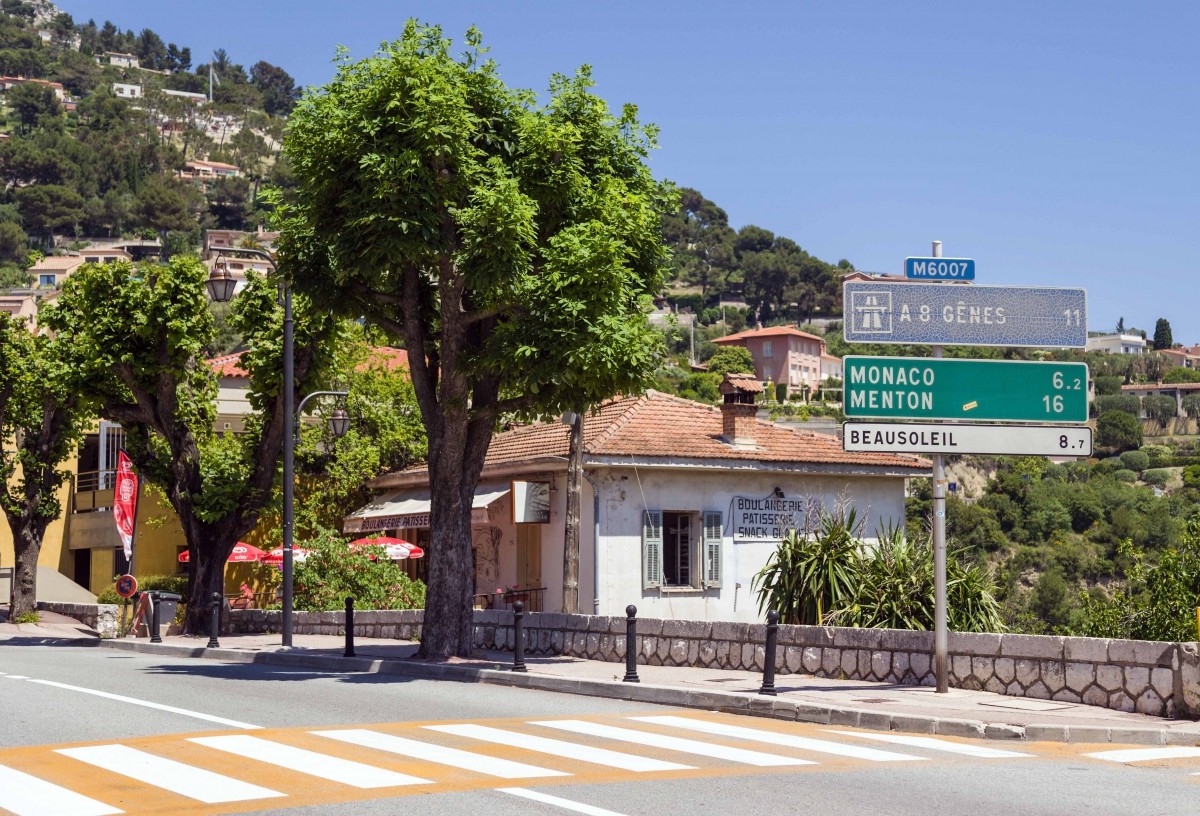
Where to stay in the Corniche Roads region
Click here for a list of accommodations to plan your trip.
Or check out this map (zoom in/out) to get more options of hotels/guest houses/campings, etc.
Booking.com
The Corniche Roads of the French Riviera
The three routes start at the port of Lympia in Nice to the west and arrive at the Franco-Italian border in Menton to the east.
Approximately 36km (16 mi) in length, the routes pass through the communes of Villefranche-sur-Mer, Beaulieu-sur-Mer, Èze, Cap-d’Ail, La Turbie, Beausoleil, and Roquebrune-Cap-Martin, as well as the Principality of Monaco.
The three routes merge before entering Menton at Roquebrune.
Previously, all road traffic from France to Italy via the French Riviera took one of these routes. The opening of the A8 motorway between Roquebrune and the Italian border in 1969 changed everything, making it unnecessary to use all three routes when crossing the Alpes-Maritimes.
Since then, these roads have been used by locals and tourists eager for spectacular views.
Each route has its charm and is an invitation to discover medieval perched villages, Roman ruins, elegant 19th-century villas, and exotic gardens.
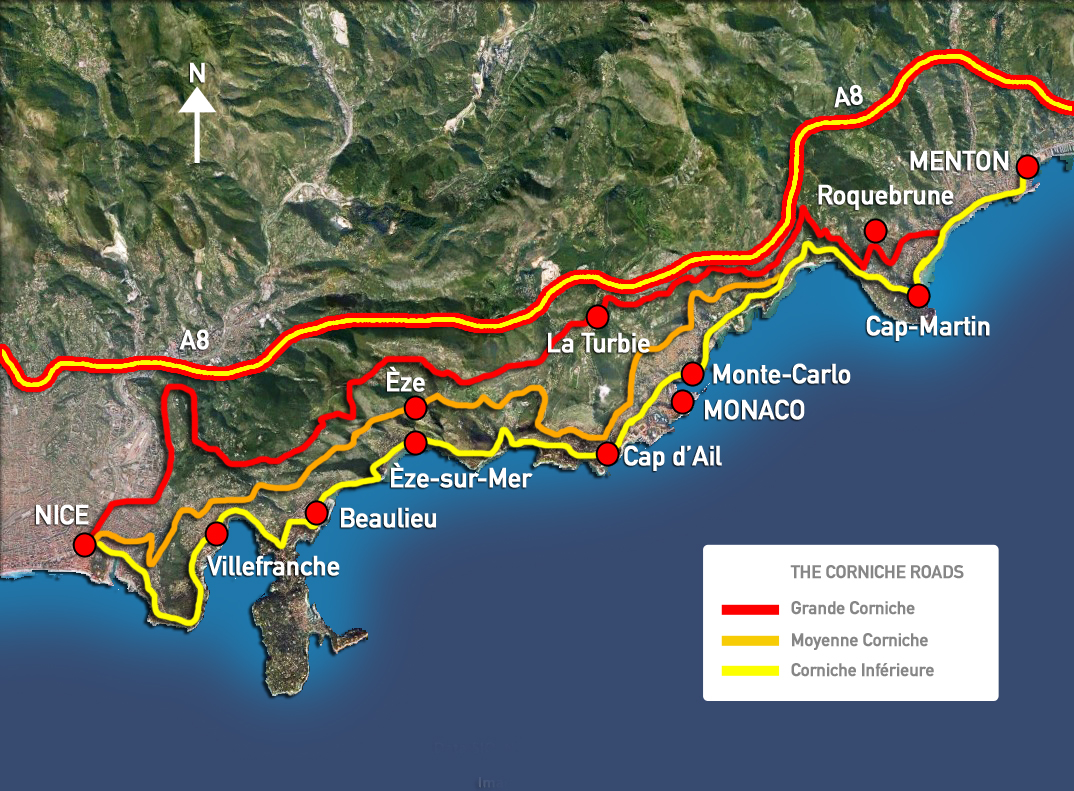
The Corniche Inférieure
The Corniche Inférieure or Basse Corniche is nicknamed the “Route du Bord de Mer” (Seaside Road). The 2005 reform downgraded the former Route Nationale 98 to Route Départementale 6098.
The Basse Corniche starts in Nice and runs along the seafront in an almost uninterrupted urban area.
It passes through Villefranche-sur-Mer, Beaulieu-sur-Mer, Èze, Cap d’Ail, the Principality of Monaco, Roquebrune-Cap-Martin and finally Menton. The route ends at the Italian border in Menton after being joined by
the Grande and Moyenne Corniches in Roquebrune-Cap-Martin.
You’ll admire numerous villas built during the Belle Époque era along the road.
The Corniche Inférieure was laid out in the 18th century by the Prince of Monaco.
The road is approximately a length of 30 km and crosses several famous sea resorts:
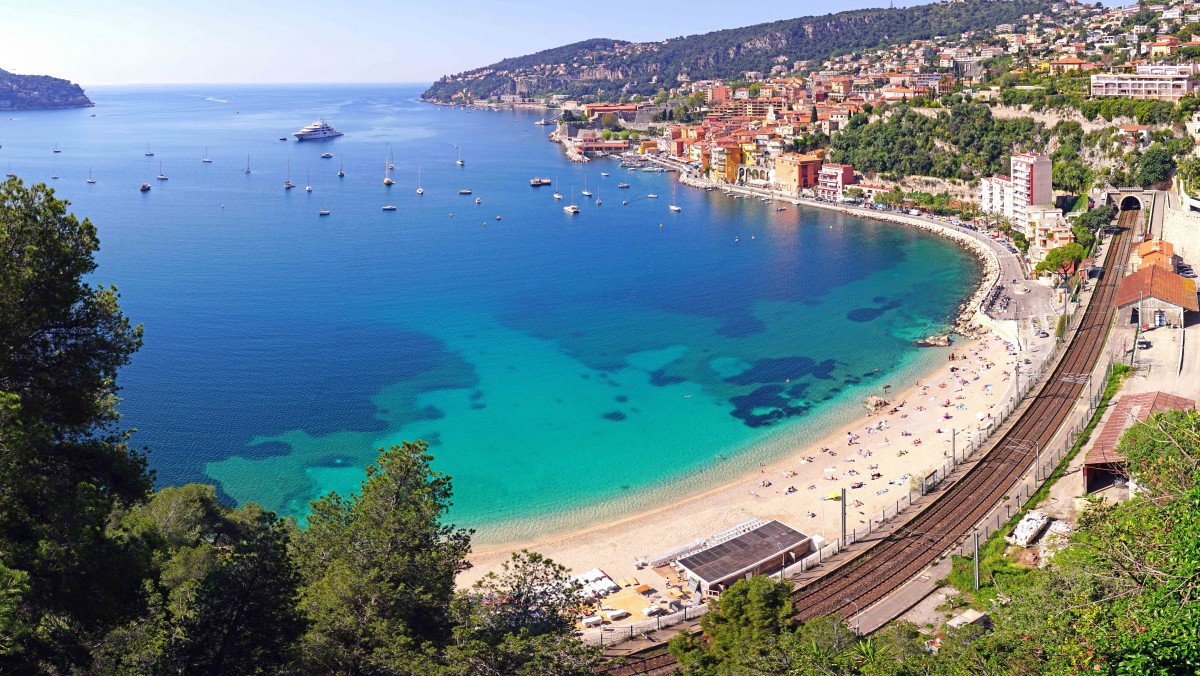
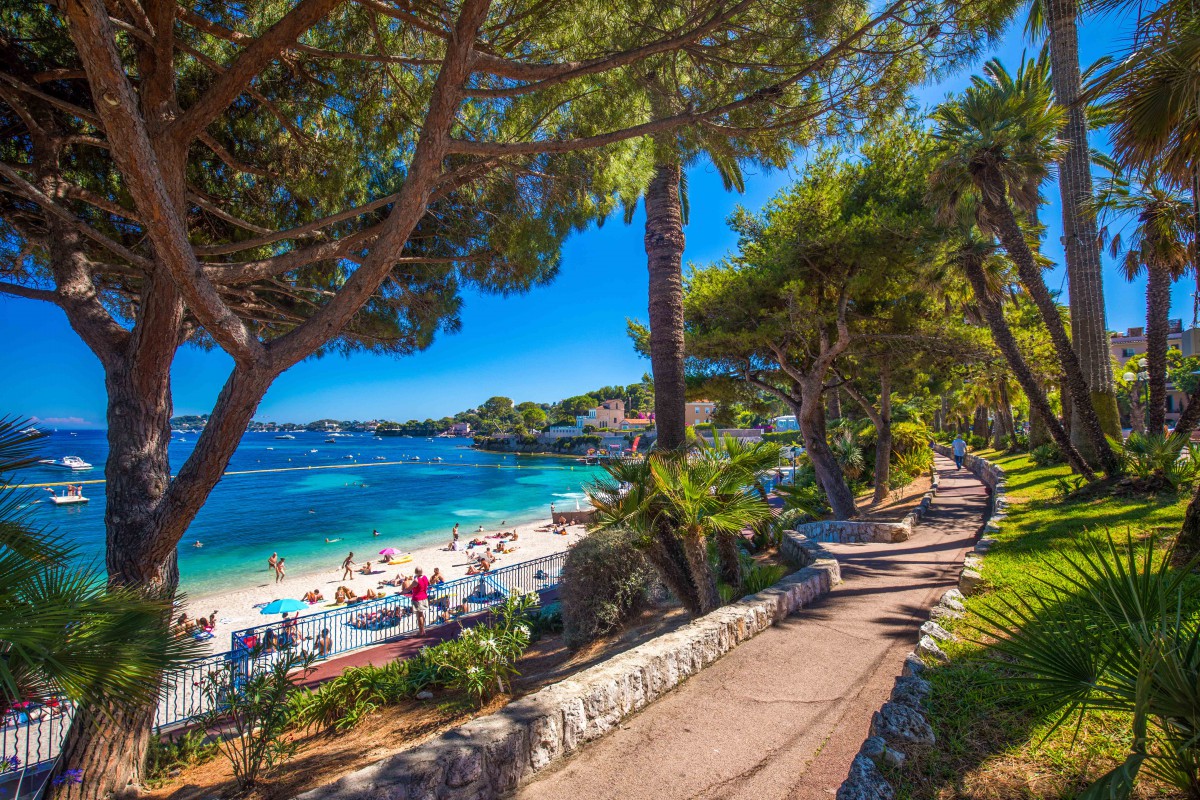
- Èze-Bord-de-Mer

- Cap d’Ail
- the Principality of Monaco

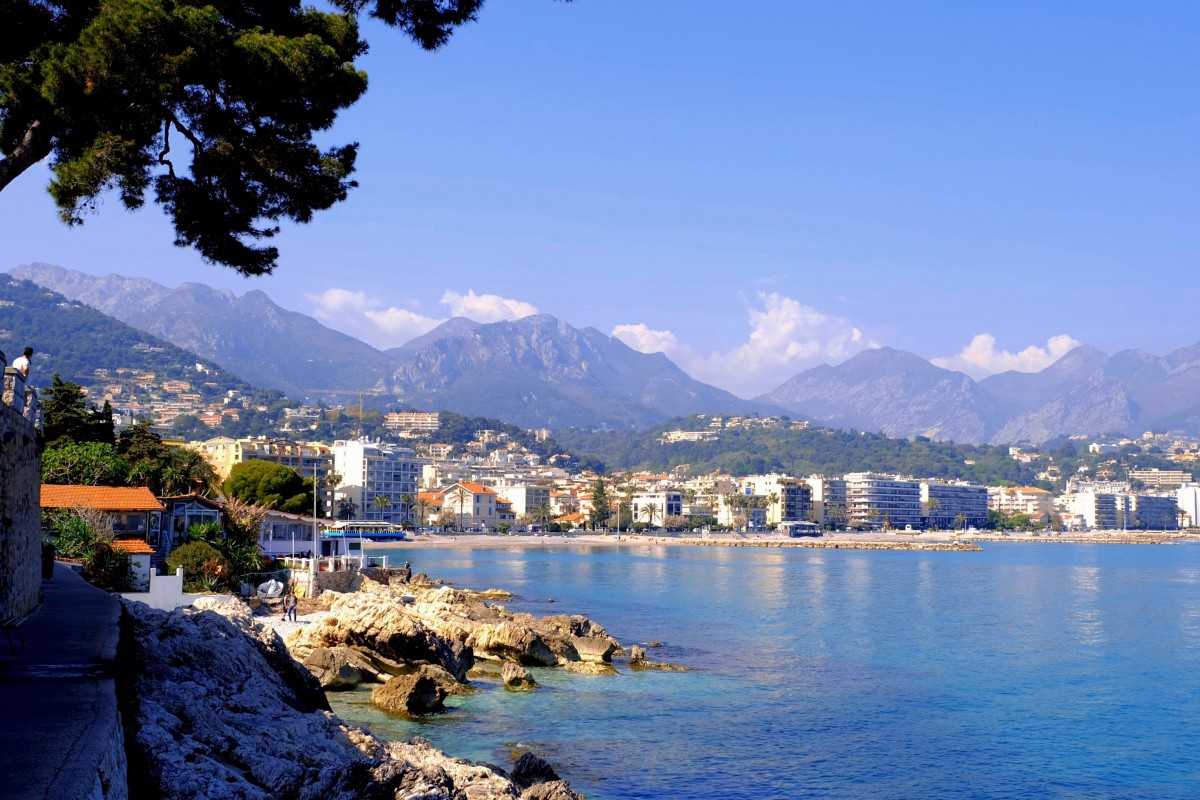
Cycling the Basse Corniche Route
Because of its proximity to the shore, cyclists and tourists think the Basse Corniche is flat, but this is only partially true.
- Climbs to almost 100m over Villefranche
- Descent to sea level at Beaulieu
- Climb to Cap d’Ail
- Descent, then ascent to Monaco.
- Ascent and descent to Cap Martin.
In addition, the road is not really pleasant to drive on because of heavy traffic (especially in summer).
The Moyenne Corniche (D6007)
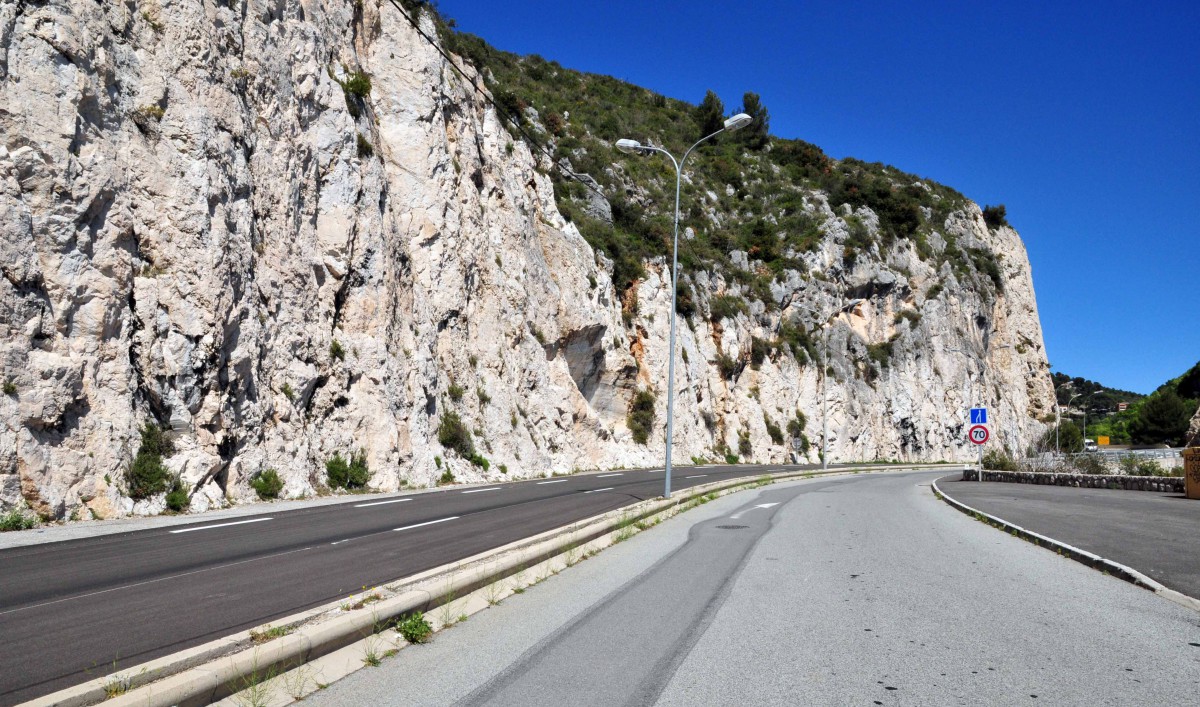
Arguably one of the world’s most famous scenic roads, the Moyenne Corniche was built between 1910 and 1928 when aristocratic tourism on the French Riviera was already causing too much traffic on the Corniche Inférieure.
The Moyenne Corniche is a very frequented road and was the preferred route from Nice to Italy before the inauguration of the A8 motorway in 1968.
The scenic driveway passes through the perched village of Èze but does not pass through the Principality of Monaco, which it borders at the top. After Beausoleil, the Moyenne Corniche descends to the Cap Martin peninsula.
Lookouts
The route passes several spectacular viewpoints on the Riviera coast, including :
- The Villefranche-sur-Mer lookout with views of the port and old town.
- The outlook at Eze before crossing the viaduct.
- The Mont des Mules car park, directly above Monaco, gives access to the Mont des Mules with its orientation table.
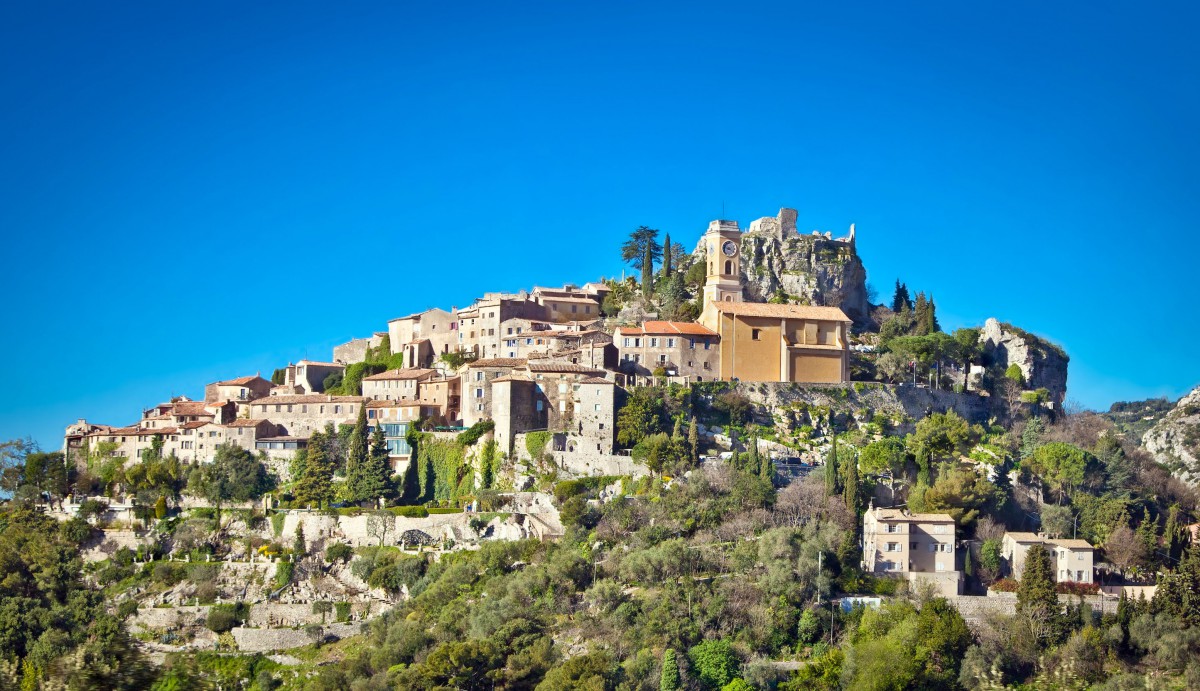
My advice! Take the Corniche Moyenne from Nice towards Menton to enjoy the views, not the other way round. If you want to stop at the lookouts, the car parks are always on the right, on the seaside. It will be easier to stop there, especially if the traffic is heavy in summer or on sunny weekends.
Cycling the Moyenne Corniche Road
This route is not very pleasant to follow by bike as it is a dual carriageway for much of the course, from Villefranche to Eze and before arriving at Cap d’Ail.
The Grande Corniche (D2564)
The Grande Corniche (Upper Corniche) was built by Napoleon I.
It follows the ancient Roman route known as Via Julia Augusta.
Running sometimes at 500 metres above the sea, the Grande Corniche avoids all the urban areas between Nice and La Turbie. It offers spectacular views over the Mediterranean coast: Nice, Cap Ferrat, Cap Martin and Monaco.
It provides access to the Nice Observatory, La Turbie and the Trophy of Augustus, the old hilltop village of Roquebrune and its medieval castle.
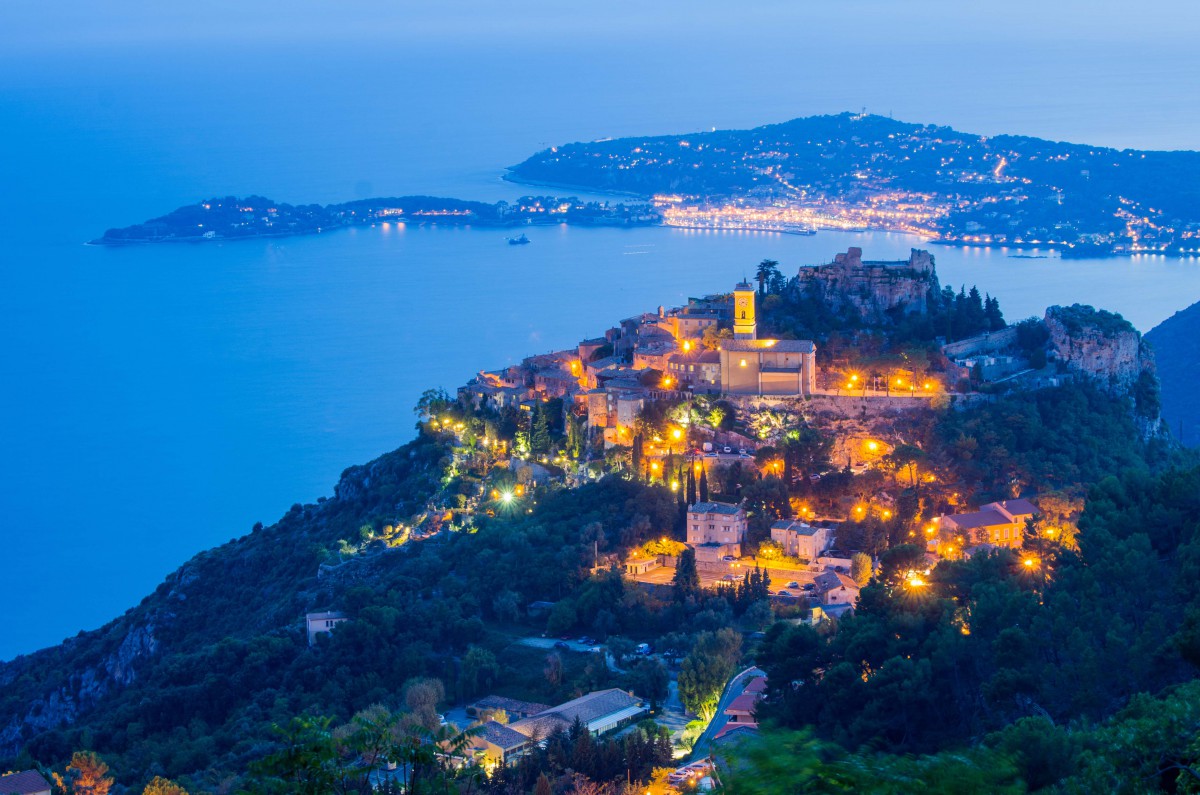
The Grande Corniche passes through the Col des Quatre Chemins, the Col d’Èze (512 m) above the perched village of Èze, La Turbie above Monaco, before descending to Roquebrune.
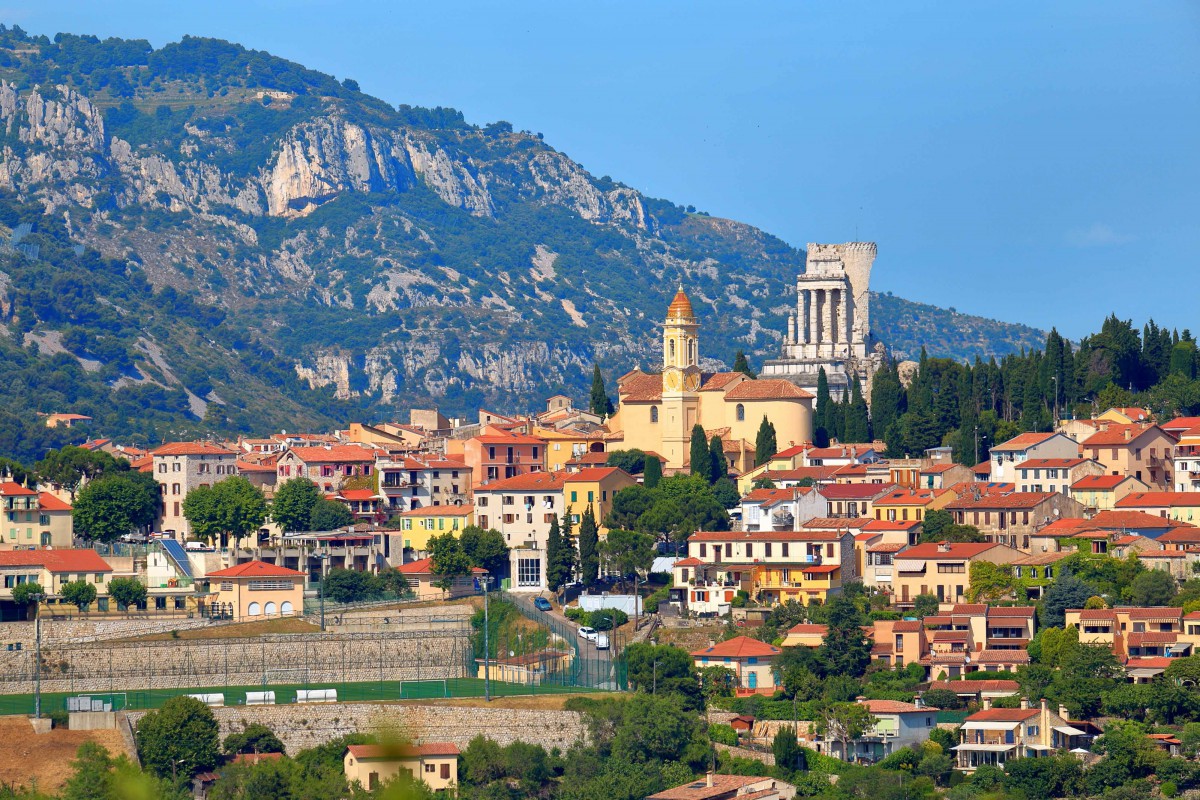

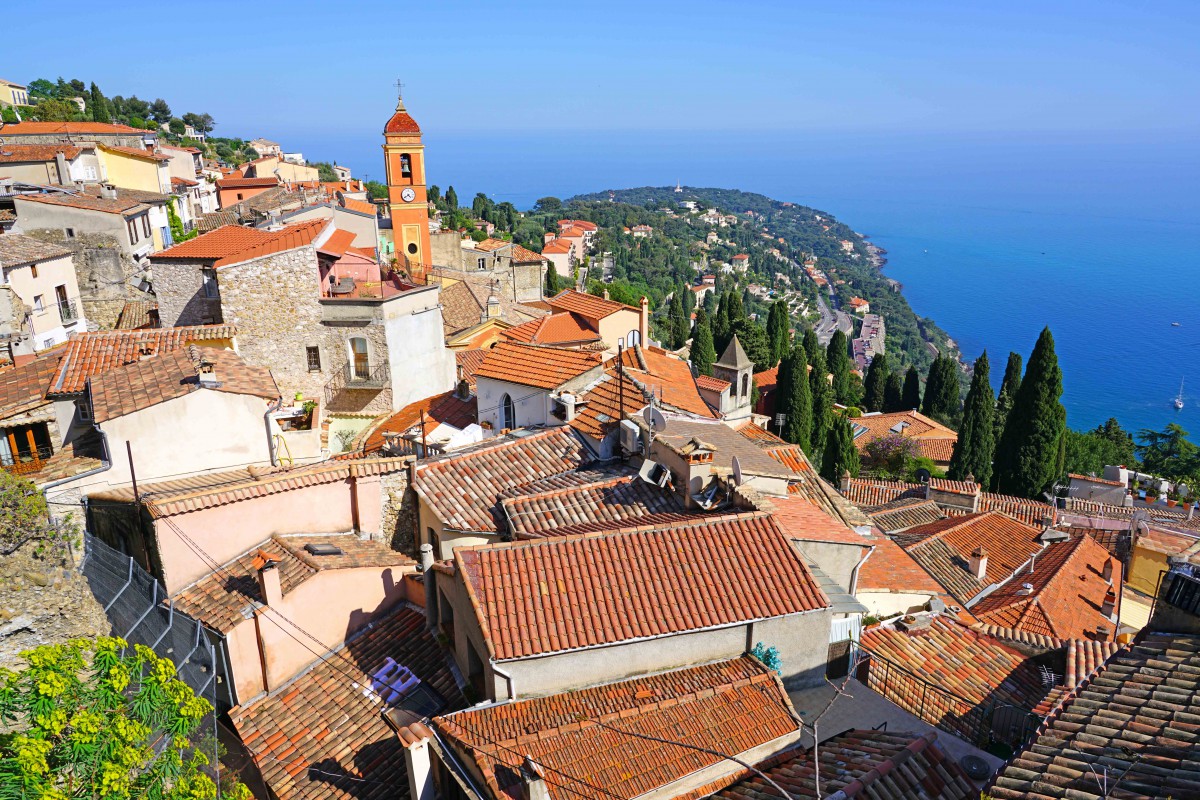
One of the most dramatic stretches of the road is around the Col d’Èze, a mountain pass 512 m high above the perched village of Èze. The road was featured in the James Bond movie “GoldenEye” (1995).
Corniche Roads: English-French Vocabulary
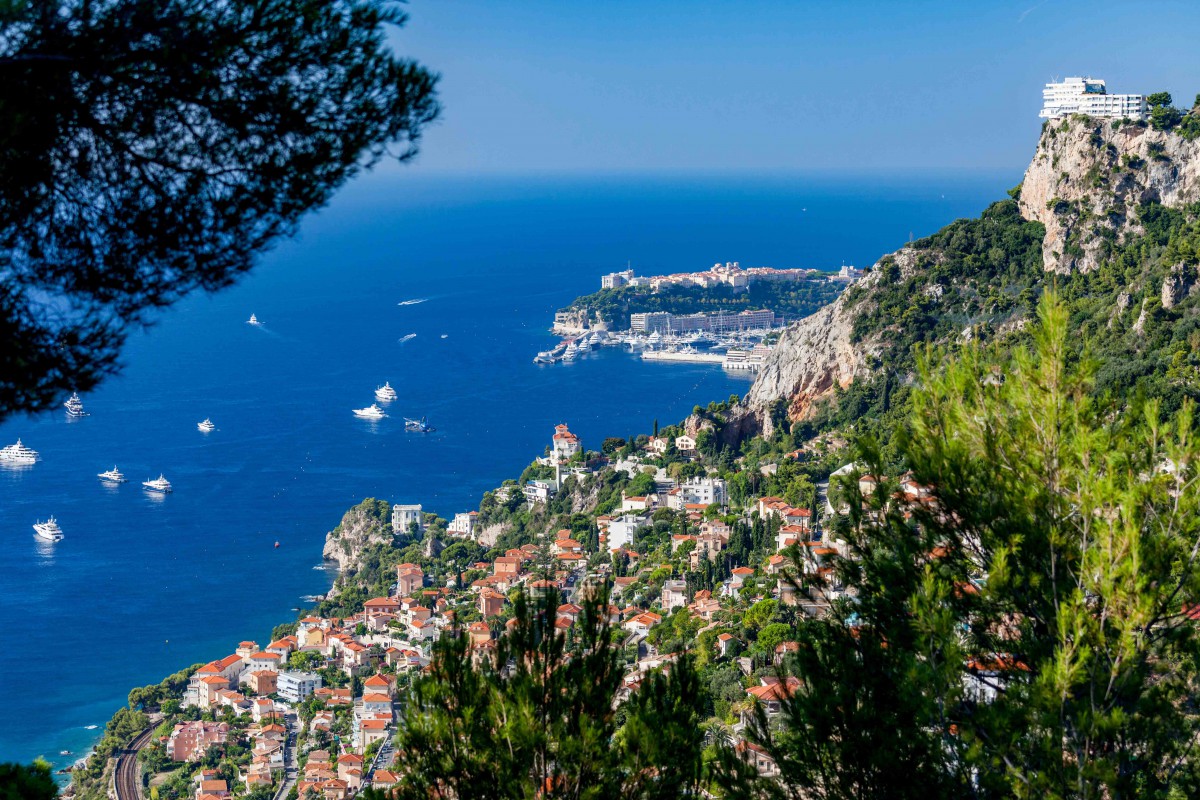
(f) for féminin, (m) for masculin, (adj) for adjective and (v) for verbs
- bay = baie (f)
- border = frontière (f)
- cape = cap (m)
- cliff = falaise (f)
- French Riviera = Côte d’Azur (f)
- harbour = port (m)
- hill = colline (f)
- marina = port de plaisance (m)
- Maritime Alps = Alpes Maritimes (f,p)
- Mediterranean Sea = Mer Méditerranée (f)
- mountain = montagne (f)
- mountain pass = col de montagne (m)
- peninsula = péninsule (f)
- port = port (m)
- road = route (f)
- Roman = Romain (m) / Romaine (f)
- sea = mer (f)
- villa = villa (f)
- view = vue (f)
Pin it for later
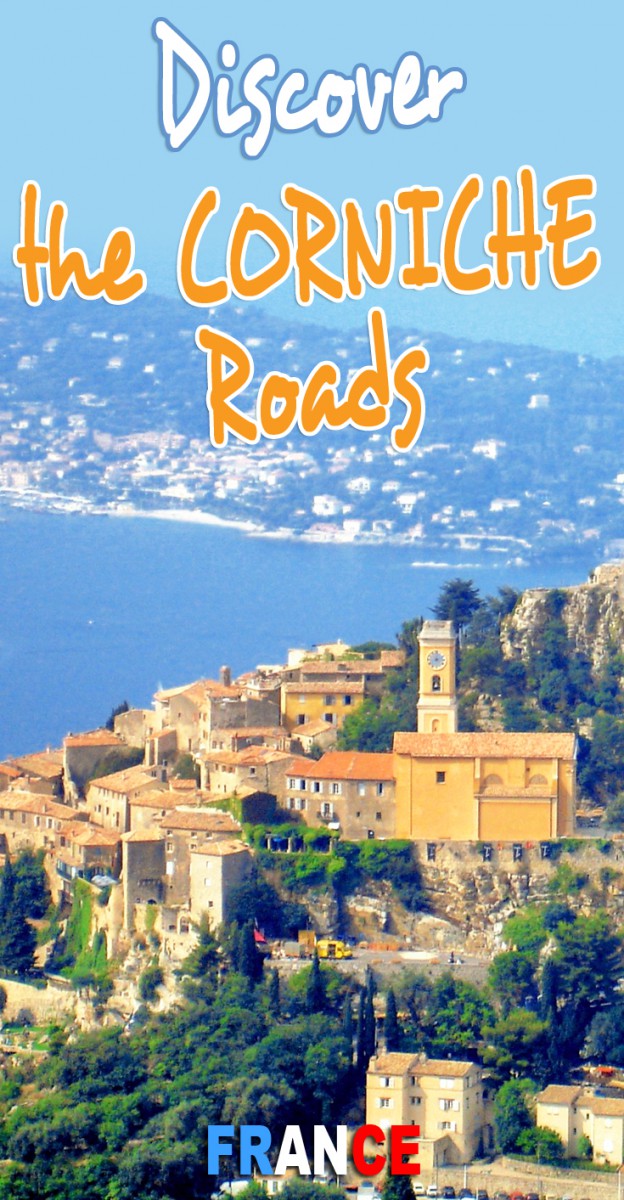
Featured image: Jimi Magic (Public Domain via Wikimedia Commons)



